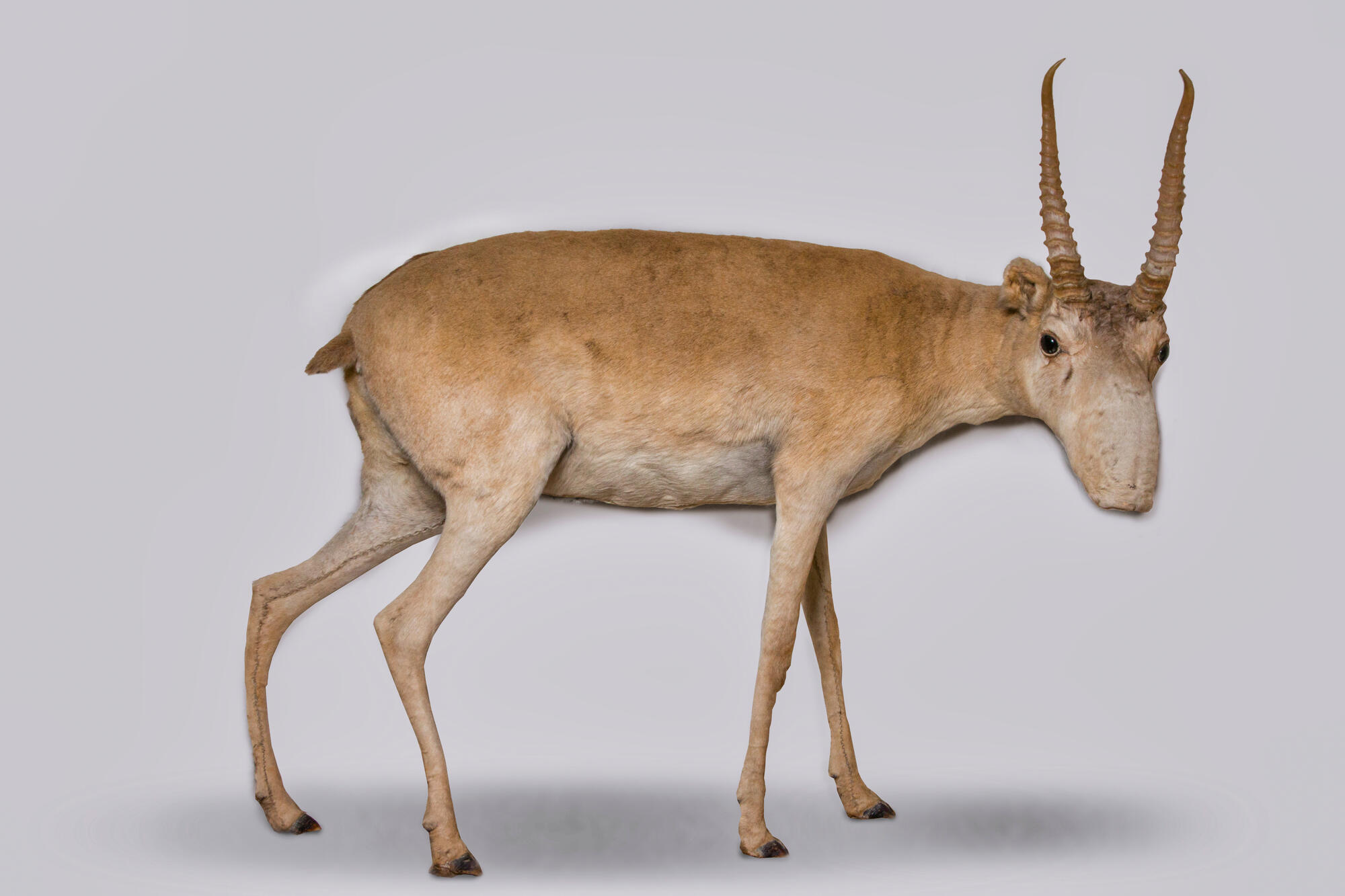During the late Pleistocene — 100–10 thousand years ago–on the edge of the ancient glacier, a wide strip of tundra-steppe with abundant herbage. Representatives of the mammoth fauna — mammoths, woolly rhinos, cave bears and saigas — lived in these periglacial steppes.
When at the beginning of the Holocene — 10–15 thousand years ago–the glacier retreated and melted, taiga forests rose in place of the steppes, in which there was no room for large herbivorous animals. Most of the mammoth fauna became extinct, but the saiga managed to survive and became a widespread species in the open landscapes of Eurasia.
The number of people in the 18th–19th centuries having increased, the saiga almost disappeared from Europe. Its numbers in Asia also sharply decreased. The reasons were the increasing fishing, grazing of livestock, plowing of virgin lands, disruption of migration routes during land reclamation and road construction. In 1919, a law was passed in Russia prohibiting hunting for saigas, but by that time there were no more than a few hundred of these animals left in the country.
Nevertheless, a contemporary of the mammoth proved to be viable. In the 1940s, its population began to recover. About 700 thousand saigas already lived on the territory of Kazakhstan at that time, and about 50 thousand in Europe. By 1960, the total number of saigas had reached approximately two million.
In search of food, herds of saigas roamed the steppes en masse not corroding the pastures. The animal, constantly in motion, fed on the move, nibbling one of the hundreds of plants it passed by. In addition, saigas were very reluctant to enter the fields of wheat, corn, alfalfa or other agricultural crops. The loose soil of the fields prevented them from moving freely, and tall dense plants hit the animals in the eyes as they ran with their heads lowered.
Nowadays, the number of saigas has again decreased due to poaching and epizootics (mass diseases). Saigas are hunted primarily for their horns, which are used in traditional medicine in Asia. The IUCN (The International Union for Conservation of Nature) has listed the saiga as critically endangered.
When at the beginning of the Holocene — 10–15 thousand years ago–the glacier retreated and melted, taiga forests rose in place of the steppes, in which there was no room for large herbivorous animals. Most of the mammoth fauna became extinct, but the saiga managed to survive and became a widespread species in the open landscapes of Eurasia.
Saigas inhabited the areas from the British Isles in the west up to Alaska in the east. They occurred in the valleys of the Siberian Rivers of the Irtysh, Yenisei and Lena; in the north, their fossil remains are found up to the New Siberian Islands in the Arctic Ocean.
The number of people in the 18th–19th centuries having increased, the saiga almost disappeared from Europe. Its numbers in Asia also sharply decreased. The reasons were the increasing fishing, grazing of livestock, plowing of virgin lands, disruption of migration routes during land reclamation and road construction. In 1919, a law was passed in Russia prohibiting hunting for saigas, but by that time there were no more than a few hundred of these animals left in the country.
Nevertheless, a contemporary of the mammoth proved to be viable. In the 1940s, its population began to recover. About 700 thousand saigas already lived on the territory of Kazakhstan at that time, and about 50 thousand in Europe. By 1960, the total number of saigas had reached approximately two million.
In search of food, herds of saigas roamed the steppes en masse not corroding the pastures. The animal, constantly in motion, fed on the move, nibbling one of the hundreds of plants it passed by. In addition, saigas were very reluctant to enter the fields of wheat, corn, alfalfa or other agricultural crops. The loose soil of the fields prevented them from moving freely, and tall dense plants hit the animals in the eyes as they ran with their heads lowered.
Nowadays, the number of saigas has again decreased due to poaching and epizootics (mass diseases). Saigas are hunted primarily for their horns, which are used in traditional medicine in Asia. The IUCN (The International Union for Conservation of Nature) has listed the saiga as critically endangered.




